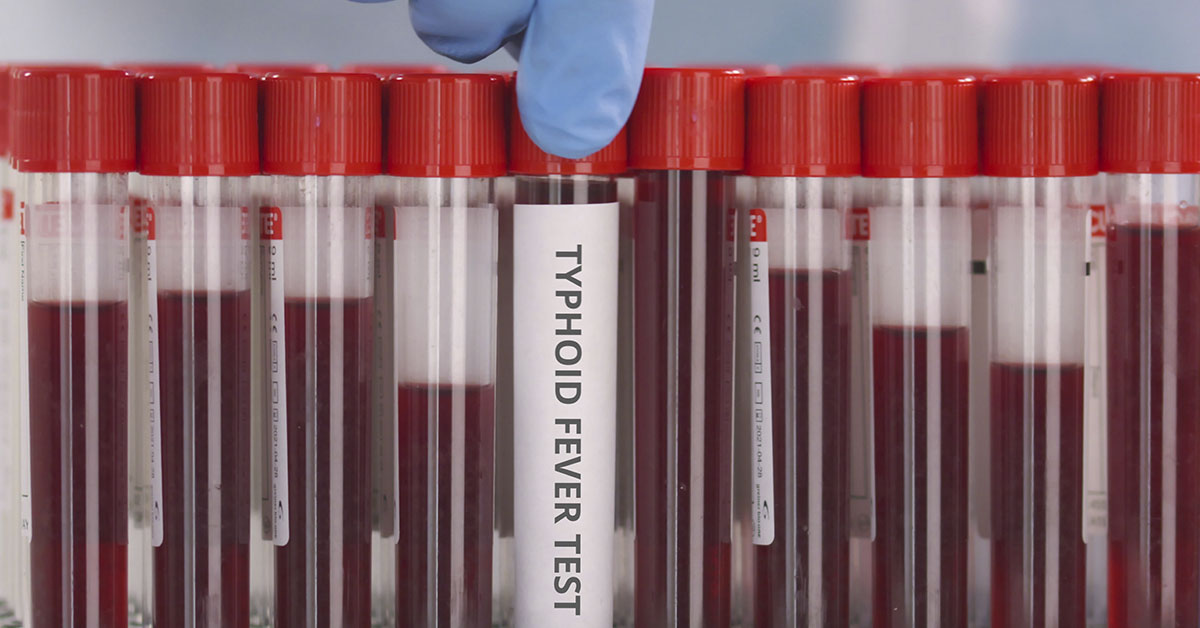Typhoid fever is a bacterial infection caused by Salmonella typhimurium (S. typhi). It can lead to fever, diarrhea, vomiting, and eventually death. But when caught early, it can be treated. However, typhoid is becoming resistant to antibiotics. In fact, a 2018 outbreak in Pakistan had patients resistant to five different kinds of antibiotics. A new study analyzed this growing resistance and warns that these strains are spreading across the world.
Read: Mom branded ‘cruel’ for giving son bleach baths, but this couldn’t be further from the truth
Strains of Typhoid Are Becoming Resistant to Antibiotics
People typically contract typhoid through consuming contaminated food and water. It can also spread from symptomless carriers who don’t know they have the bacteria. It’s more common in places with inefficient hygiene and sanitation methods. Many cases from South Asia were then exported to Southeast Asia, and Eastern and Southern Africa. But typhoid superbugs have also been reported in the United States, Canada, and the United Kingdom. Researchers found almost 200 cases of international spread of typhoid fever since 1990. Overall, the disease causes 100,000 deaths all over the world each year. [1]
For this new study, scientists analyzed the genomes from 3,489 cases of typhoid from 2014 to 2019. Then they looked at data from Pakistan, India, Nepal, and Bangladesh — the countries most fraught with the infection. They combined this with 4,169 similar samples from over 70 countries from over a century-long period. All of these findings were published in The Lancet Microbe. [2] They came to the conclusion that although antibiotic resistance has declined in South Asia, the rest of the world is not safe. The number of strains that can override two crucial types of antibiotics has risen in number and spread to other countries.
Of course, antibiotic-resistant bacterial infections are not a new phenomenon. Scientists and doctors have been warning about superbugs for a long time now. In fact, in 2019, medication-resistant diseases took more lives than malaria or HIV.
“The speed at which highly-resistant strains of S. Typhi have emerged and spread in recent years is a real cause for concern, and highlights the need to urgently expand prevention measures, particularly in countries at greatest risk,” said Jason Andrews, the study’s lead author and an associate professor at Stanford University. “The fact resistant strains of S. Typhi have spread internationally so many times also underscores the need to view typhoid control, and antibiotic resistance more generally, as a global rather than local problem.” [3]
Read: This one photo of lemons is helping women detect breast cancer
How to Protect From Typhoid Fever
Therefore, the CDC recommends preventive measures to try to combat typhoid’s growing resistance to antibiotics. These include: vaccinations, improving hygiene and sanitation facilities, and tracking people with the infection to prevent further spread. If someone is traveling to a high-risk area, they should get a vaccine against typhoid fever in the form of an injection or an oral medication. However, since the vaccine is only 50–80% effective, people should still remain cautious when eating, drinking, and interacting with people.
Keep in mind, that even when typhoid symptoms end, the patient could still carry the bacteria, sometimes for months. Therefore, to avoid spreading the infection, they should take extra care when handling food and meeting other people. If someone is inhabiting a location where typhoid is spreading, here are some general rules to follow:
- Drink bottled water or boil available water for at least a minute before drinking
- Be cautious around food someone else handled
- Avoid street food stands
- Don’t put ice in drinks
- Avoid raw fruit and vegetables and peel the ones you do eat without eating the peel [4]
Implementing protective measures can help decrease one’s chances of contracting the infection. Because of typhoid strains becoming resistant to antibiotics, prevention is certainly the best measure.
Keep Reading: Is It Safe To Drink Water From The Bathroom?
Sources
- “An Ancient Killer Is Rapidly Becoming Resistant to Antibiotics, Scientists Warn.” Science Alert. Carly Cassella. June 23, 2022
- “The international and intercontinental spread and expansion of antimicrobial-resistant Salmonella Typhi: a genomic epidemiology study.” The Lancet Microbe. Kesia Esther da Silva, PhD; Arif Mohammad Tanmoy, MSc; Agila Kumari Pragasam, PhD; Junaid Iqbal, PhD; Mohammad Saiful Islam Sajib, MSc; Ankur Mutreja, PhD. June 21, 2022
- “Antibiotic-Resistant Typhoid From Asia Is Spreading Worldwide.” Bloomberg. Chris Kay. June 22, 2022
- “What you need to know about typhoid.” Medical News Today. Tim Newman June 5, 2022

